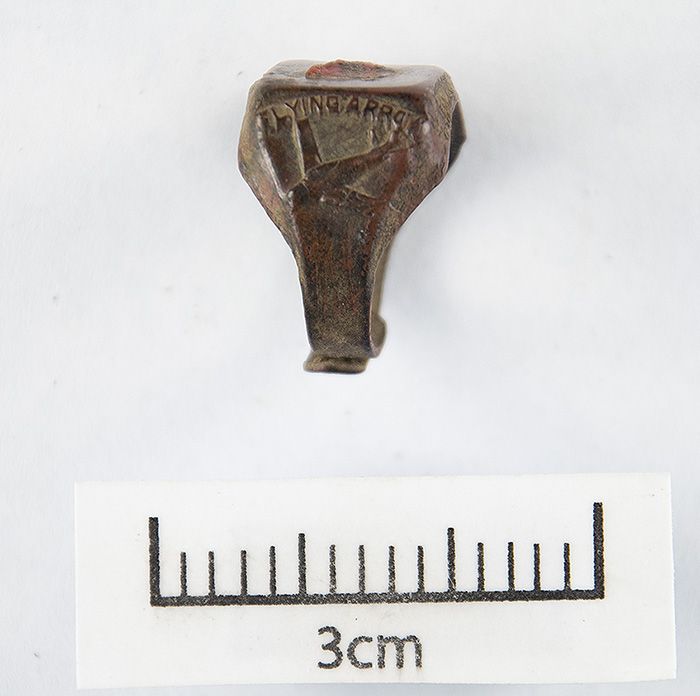Deborah Sabo, Victoria Jones, and Jamie Brandon
Artifact of the Month - July 2019

Our July Artifact of the Month is a small toy brass ring that was offered as a premium to fans of the 1940s Sky King radio program. It was found during excavations at Leetown hamlet as part of an archeological field school at Pea Ridge National Military Park, a well-preserved Civil War battlefield landscape in northwest Arkansas. How did a 1940s kids’ toy turn up on a Civil War battlefield site? Archeologists are always prepared for the unexpected, and internet sleuthing by the field school students helped solve this particular mystery.
Founded in the 1840s, the hamlet of Leetown played an important role in the Civil War battle of Pea Ridge. However, with the exception of a couple farmsteads, the community was gone by the 1880s. No reliable map of 19th century Leetown exists and the documentary record offers many opinions about how many buildings were a part of the community and where they were located. During the Spring of 2017 the Arkansas Archeological Survey conducted a remote sensing survey of the area of the Leetown hamlet. This was followed by test excavations undertaken as a part of the 2017 University of Arkansas archeological field school in June. These excavations were the subject of Victoria Jones’s master’s thesis. All of the fieldwork was part of a four-year cooperative project between the Arkansas Archeological Survey and the National Park Service (NPS) Midwest Archeological Center to carry out a comprehensive archeological inventory at Pea Ridge National Military Park, under the NPS CESU (Cooperative Ecosystem Studies Units) program.
Field school excavations at the Lee/Mayfield house uncovered the entrance to a large 19th century cellar that had been resurfaced in the early 20th century and later filled in with trash. Large quantities of refuse from the 1930s through 1950s were recovered, including our July Artifact of the Month — a toy ring associated with the popular Sky King radio program of the 1940s. Sky King recounts the adventures of a rancher who also flies a plane and solves mysteries and international intrigues. A subsequent Sky King television program ran in the 1950s.
As with many radio shows of the time, “radio premiums” were offered to young listeners as marketing accessories, including several varieties of rings with “secret” functions. Our artifact most likely was a Magni-Glow Writing Ring (there were other Sky King rings, including the Electronic Television ring, the Radar Signal ring, and the Teleblinker ring). Kids obtained the rings and other premiums by sending in labels from a jar of Peter Pan peanut butter, the sponsor of the Sky King program.

